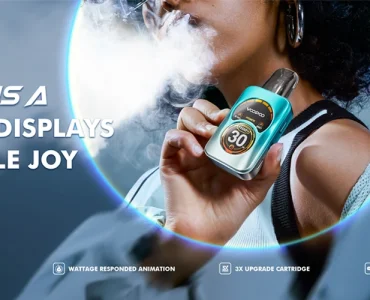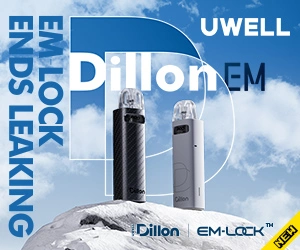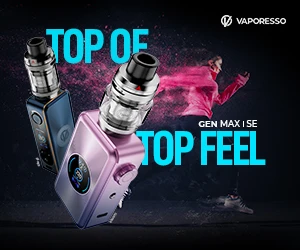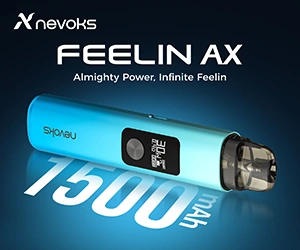While the expression “may you live in interesting times” may seem like a blessing, others see it as a veiled curse. It could certainly be said that in 2021 vapers, and the vaping industry, lived in some very interesting times.
Over this year there were many developments, some bad, others potentially good, and some yet to play out. In today’s article, we take a look back through 2021 and examine what made this year so ‘interesting’.
2021 and Vaping | A Yearly Roundup
Vape Mail Bans
It is doubtful that anyone would call 2021 a ‘good year’ for vaping. In fact, the first seeds for the coming year were planted at the very end of 2020. On December 28th, 2020, the then President, Donald Trump, signed the “Preventing Online Sales of E-Cigarettes to Children Act”.
In complying with the “Prevent All Cigarette Trafficking”, or PACT act, the situation devolved into what would ultimately become the ‘vape mail ban’.
This set the wheels in motion to lead the United States Postal Service and many others, such as FedEx, to stop accepting vaping products. And this wasn’t just limited to e-liquids. In fact, it included electronic devices, accessories, and components too.
Vape companies, over 400 of them, along with the American Vaping Association, forwarded a letter to the CEO of FedEx, urging the company to reconsider its stance.
Enterprising Vape Companies, such as Eightvape, sought alternative solutions. You can read an interview with George Chang, CEO of the company, here.
While the USPS was originally given 120 days to implement a strategy, there were delays. It was not until late October that the ban was finally introduced.
2022 will be another ‘interesting’ year. It remains to be seen whether vape companies can successfully use and implement private courier services to ship their products.
Premarket Tobacco Applications and the FDA
If four letters could characterize this year for vapers, it would be ‘PMTA’.
In 2021 the US Food and Drug Administration, under the guise of calling vape products ‘tobacco’ products, introduced the requirement that all manufacturers submit proof that their products are ‘appropriate for the protection of public health”.
Manufacturers were forced to submit costly applications based on an FDA ruling deadline, which the FDA themselves then missed.
The criticism leveled at the FDA, following the requirement for PMTAs, could be logically justified.
The administration rejected the overwhelming majority of applications, approving only a handful, and those were from major tobacco companies.
Perhaps the worst thing was that many manufacturers were left in the dark about exactly what they had to do to be approved. The FDA only saw fit to publish the ‘final’ rules a month after the deadline for applications had passed.
In the meantime, over 1 million products had been prohibited from sale.
The result?
A reversal in a 20-year downward trend of combustible cigarette smoking.
Was there any ‘good’ news?
Yes, some.
Certain vaping manufacturers refused to take their punishment lying down and fought back against the mindlessness.
Several vaping manufacturers were able to get a stay on their Marketing Denial Orders, with the FDA being forced to admit that they hadn’t given an adequate assessment of the information that was provided as part of each company’s application.
Not everyone who appealed was granted a stay. However, the good news is that the overturning could lead the way for other manufacturers to launch further claims.
Taxation
Vaping faced another hammer blow in 2021 following its inclusion for higher taxation on the “Build Back Better” Bill.
The strangest thing was that the idea of increased taxation on cigarettes by a similar proportion was left off the bill.
The move was heavily criticized. Many opponents correctly claimed that this tax would victimize lower-income families. Not only would it hit them financially, but they would possibly be forced back towards smoking as it would be ultimately cheaper.
However, the end of the year saw some good news regarding the ‘vape tax’.
Following a push by Senator Catherina Cortez Masta, the proposal was removed from the bill. This could certainly be seen to be a victory for vaping.
Pro Vaping Studies
While, based on the above, vaping took quite a beating, there were reasonable voices among the cacophony.
Several studies were released, demonstrating (contrary to the opinions of the bought and paid for WHO) that vaping was an effective way to quit smoking and wasn’t the ‘threat to youth’ pushed by anti-vaping zealots, such as Congressman Raja Krishnamoorthi.
A study conducted in San Francisco demonstrated that restrictions in vaping flavors had a counterproductive effect and led to a rise in teen smoking. A further study suggested that teens who vaped would have otherwise smoked.
Both studies were released around the same time Canada proposed a ban on flavored E-liquids.
‘Protecting the youth’ was the stick most commonly used to beat the vaping industry. With emotive language like a ‘vaping epidemic’ being bandied about with little understanding of how small the problem truly was. A study actually showed that youth vaping wasn’t the problem it was being portrayed as, leaving the FDA to resort to semantics and misrepresentation of statistics to further what was most definitely an agenda.
It was interesting to note that during this period, other health authorities were extremely keen to promote vaping as one of the healthiest smoking alternatives.
What’s more, in the late summer of 2021, an article published by the American Public Health Association, led by a Professor Emeritus of Health Management, further concluded that vaping was an effective smoking cessation tool.
Counterproductive Laws
Division and lack of logic have characterized 2021 as a whole, and the vaping community did not escape unscathed.
Some laws and regulations were introduced on smaller scales that left many in 2021 perplexed and exasperated.
Examples?
The FDA declared that any e-juice that e-juice that didn’t taste of tobacco or menthol could be considered ‘flavored’. This included unflavored liquids.
Elsewhere in the US, towns were prohibiting sales of vaping products to anyone born after a certain date, regardless that they were of legal age.
Other areas, such as Denver, attempted to ban flavored vaping products locally. It was almost entirely lost on the antagonists that neighboring towns and cities wouldn’t follow suit, making the policy almost entirely worthless.
Fortunately, before this ban was enacted, it was vetoed by the City Mayor.
The Rise of Synthetic Nicotine?
Whether discussing what ‘flavor’ is or what counts as an ‘epidemic’, 2021 has been a year of semantics.
As the popular adage goes, “if you can’t beat them, join them”.
As its livelihood depended on it, the vaping industry sought ways to work within the existing rules. One enterprising solution to get around any legislation using the words “tobacco products” was to skip the tobacco completely (as vaping has always done anyway).
The solution?
Lab-created synthetic nicotine that had never been anywhere near a tobacco plant. While this could have presented a real win for vaping, those in power are again trying to justify their own position.
The “witchfinder general” of vaping, Raja Krishnamoorthi, announced that he would investigate synthetic nicotine. The language used in his letters to two companies doesn’t inspire much confidence in it being an impartial investigation.
Hopefully, 2022 will see whether vaping could eventually triumph.
Goodbye 2021, Is There Hope in 2022?
For the vaping industry, 2021 has not been the best year. Some might argue that it ranks as one of the most damaging since the year cigarettes were invented from a public health perspective.
Vested interests, tails wagging the dog, and overall, a deep misunderstanding of what vaping actually is and what it certainly does achieve have characterized the year from the start.
With Mitch Zeller retiring in 2022, and the anticipated appointment of Robert Califf as FDA chief is not good news for the vaping industry. It is expected that the Center for Tobacco Products (CTP) may be headed by someone equally as hardline, who fails to appreciate the difference between vaping and smoking.
Ignoring the facts that don’t suit the narrative, such as the inversely proportional relationship between vaping uptake and cigarette smoking, doesn’t bode well for the future of public health.
We are certainly living in “interesting times”. Whether this will be a blessing or a curse remains to be seen.









Add comment